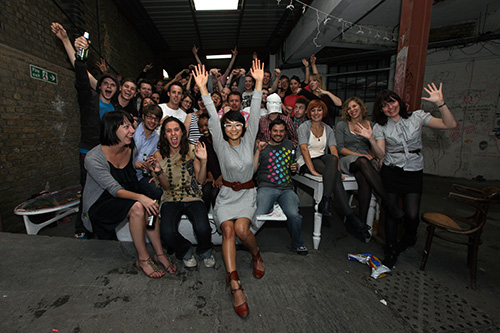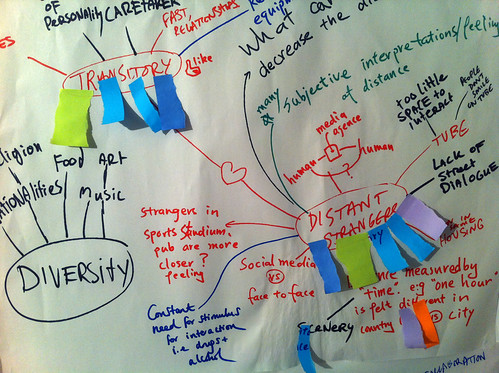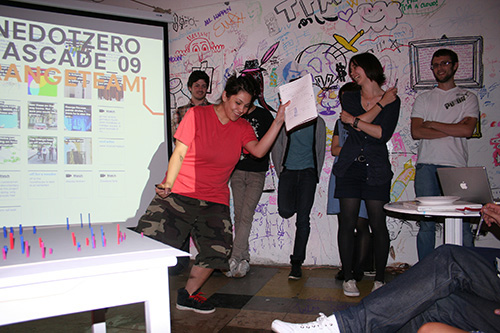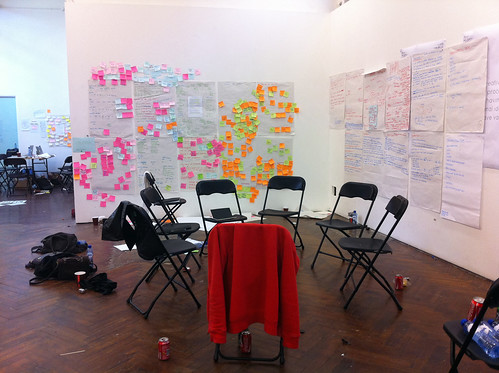Friday, 11:01am
12 October 2012
Play to win
What do design students get for their £9000 a year? Cascade is looking for ways to link education to an uncertain future in the world of work

A new academic year is an opportunity for anyone who works in education to re-assess what they do and why they do it, writes Derek Yates. The past twenty years’ cosy myths about art and design education are being blown apart.
Students are questioning what they get for their £9000 a year and parents want to know how you intend to get their offspring a job. To government, pressure for accountability translates very neatly into our creative industries getting the graduate they want.
Decision making at Cascade ’11.
Top: celebrations at the end of Cascade ’09.

As one of the co-creators of ‘Cascade’ – the education programme that has underpinned the Onedotzero ‘Adventures in Motion’ Festival – I wonder whether the reality is so simple. Cascade was conceived as a place between ‘industry’ and education, where graduates can work on real world problems alongside practitioners – but also explore and play to a degree not always possible in a commercial environment.
Presentations at Cascade, 2009.
Since its launch in 2008, Cascade has explored emerging methodology in contemporary communication design. Through intensive workshop programmes at venues around London we have aimed ‘to promote collaboration and convergence’ and offer opportunities for ‘graduates from different creative disciplines to test and respond to the creative opportunities offered by cross-disciplinary working and new technologies’.
Graduates from sixteen different creative disciplines – including graphic designers, architects, programmers, copywriters, illustrators, animators and moving image designers – have shared ideas. They have worked with professional design practices such as Jason Bruges, Moving Brands, Quayola, Greyworld, Kin, AllofUs, Glue, LBi and Hellicar & Lewis on problems of utopian space, group identity and perceptions of the urban environment. In previous years, participants have presented their ideas at the British Film Institute to launch ‘Adventures in Motion’.
Matt Wade from Kin presents at Cascade, 2008.
For participants, the experience challenges accepted models of design education and offers a uniquely informed, critical view of the creative industries. Our universities and art schools can learn from this: but the lesson is not simply that they need to replicate what the creative industries do. Cascade shows the potential of an alternative space where students can examine – and question – industry ideas and methodologies. This might help to prepare a generation of students to transform the creative industries into an economically and environmentally sustainable sector, ready for an uncertain future.
For more about associated projects see the new UAL website altshiftual.com.
After the end of day discussion.
Eye is the world’s most beautiful and collectable graphic design journal, published quarterly for professional designers, students and anyone interested in critical, informed writing about graphic design and visual culture. It is available from all good design bookshops and online at the Eye shop, where you can buy subscriptions, back issues and single copies of the latest issue. You can also browse visual samples of recent issues at Eye before You Buy.



